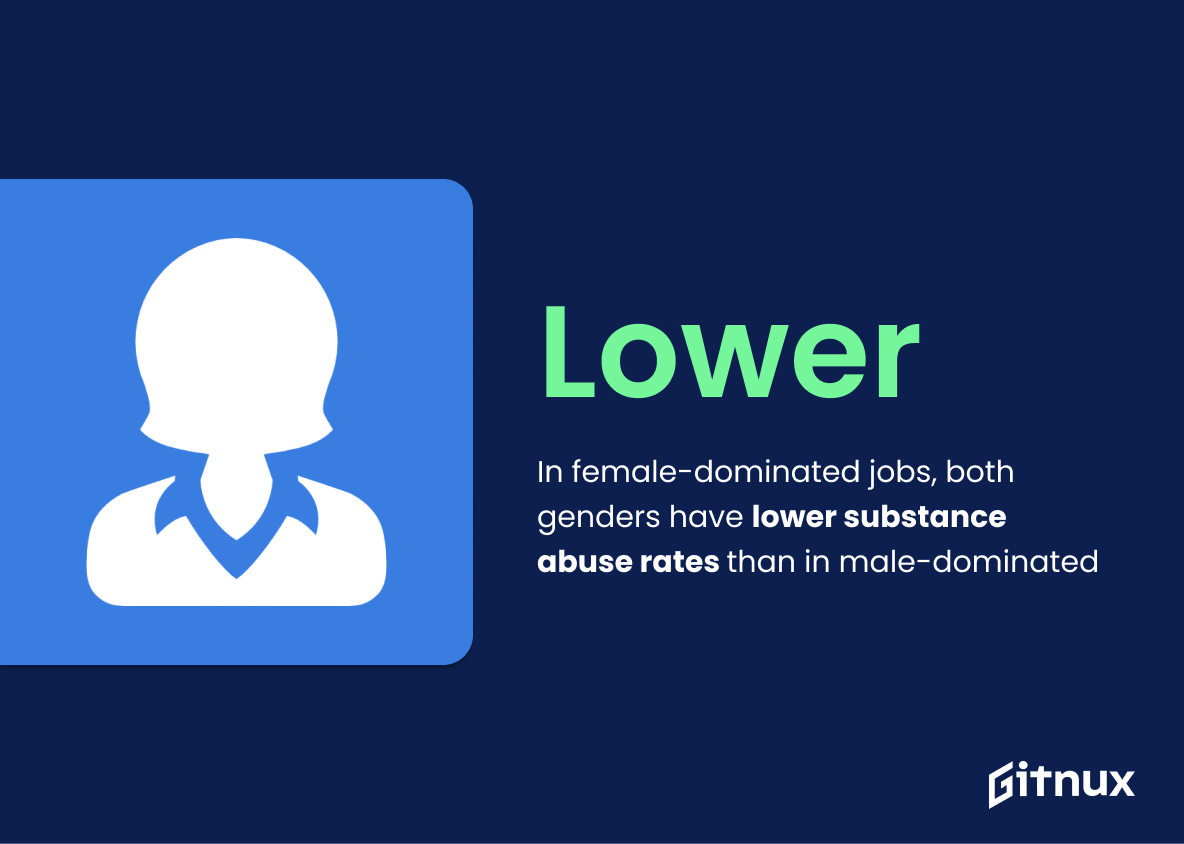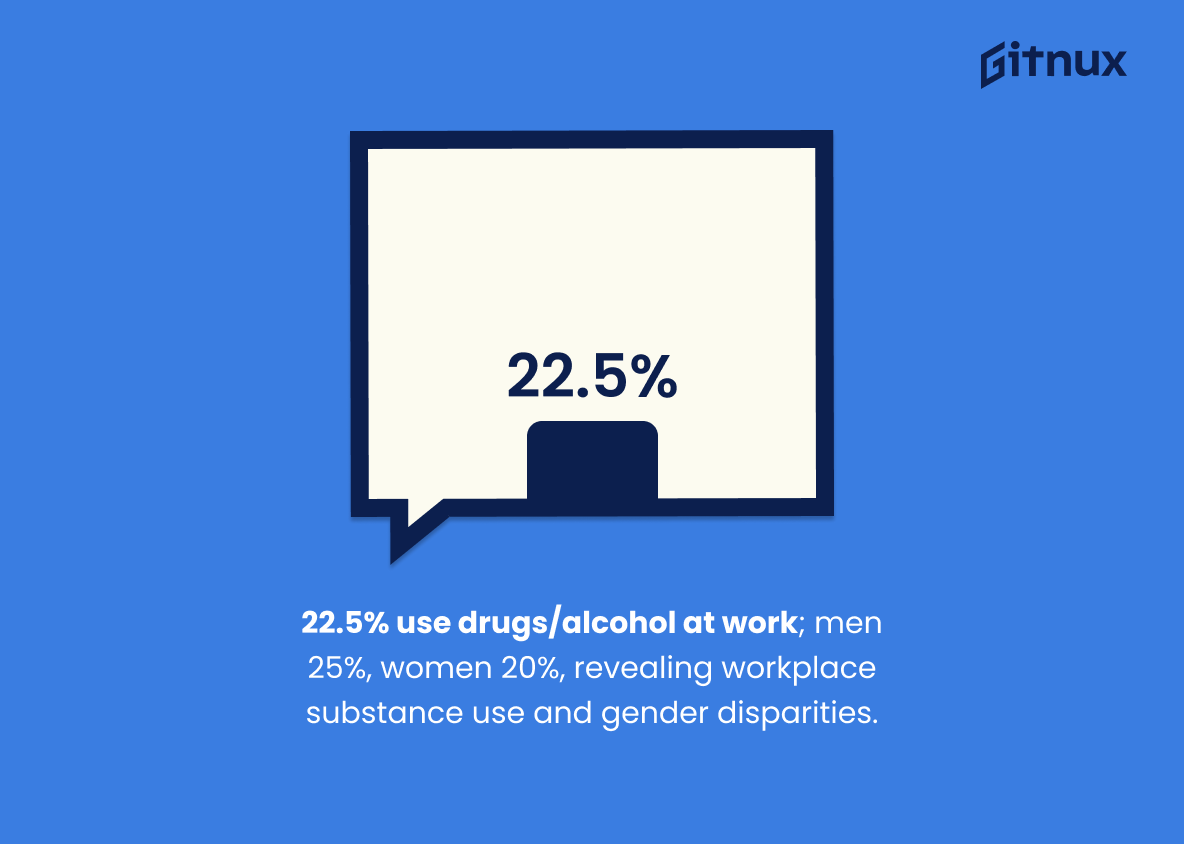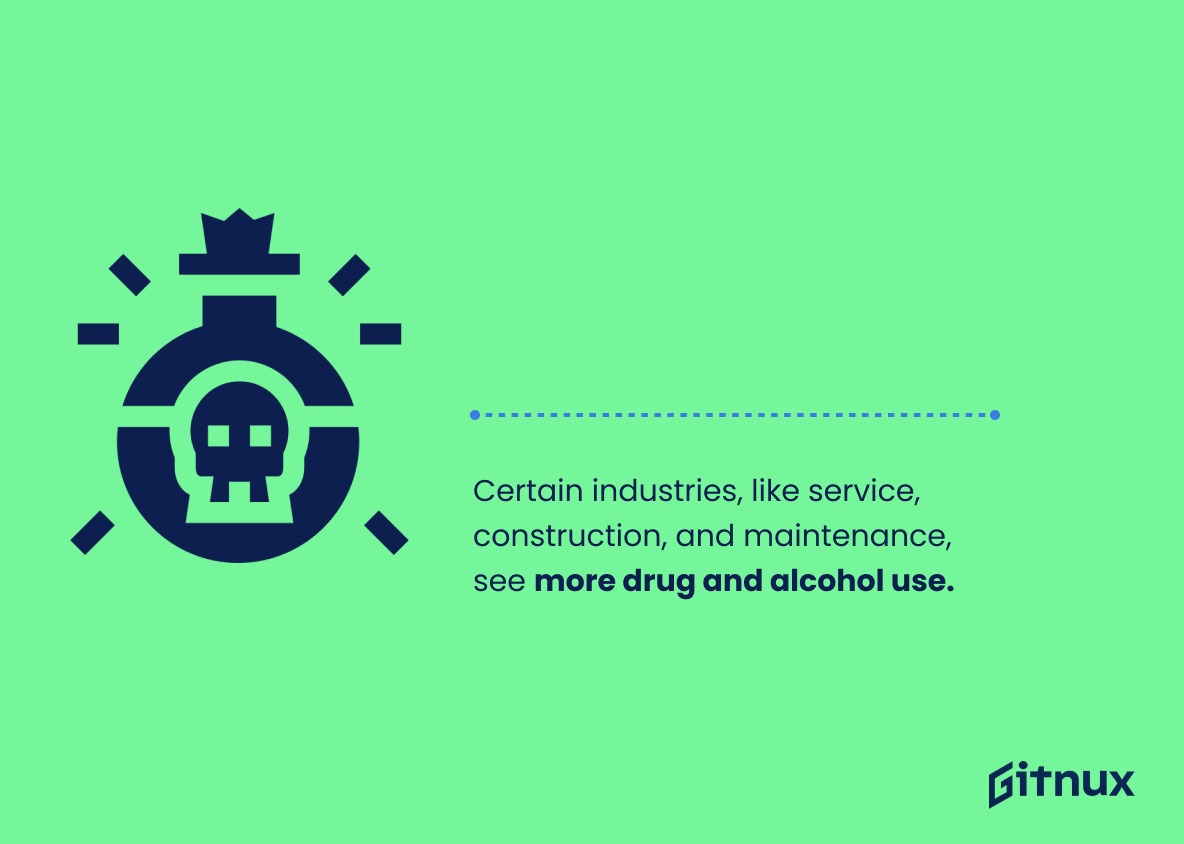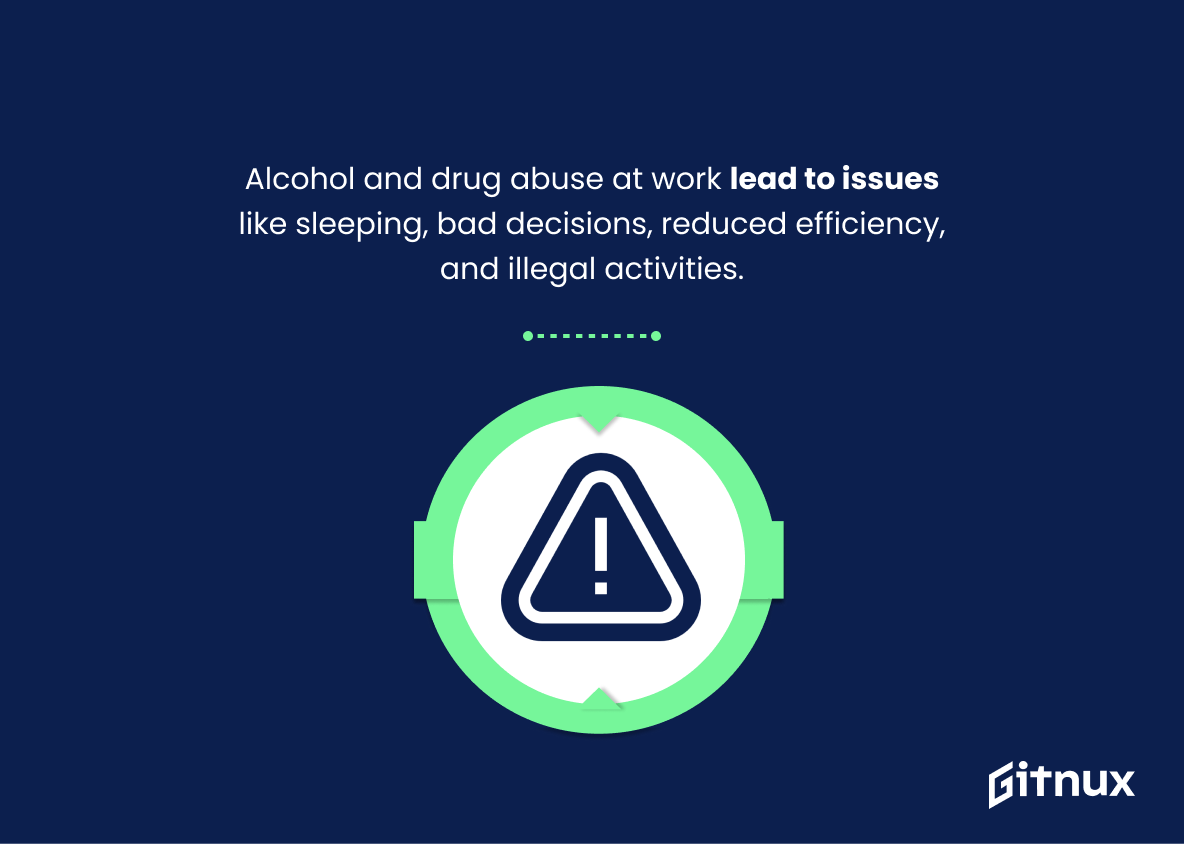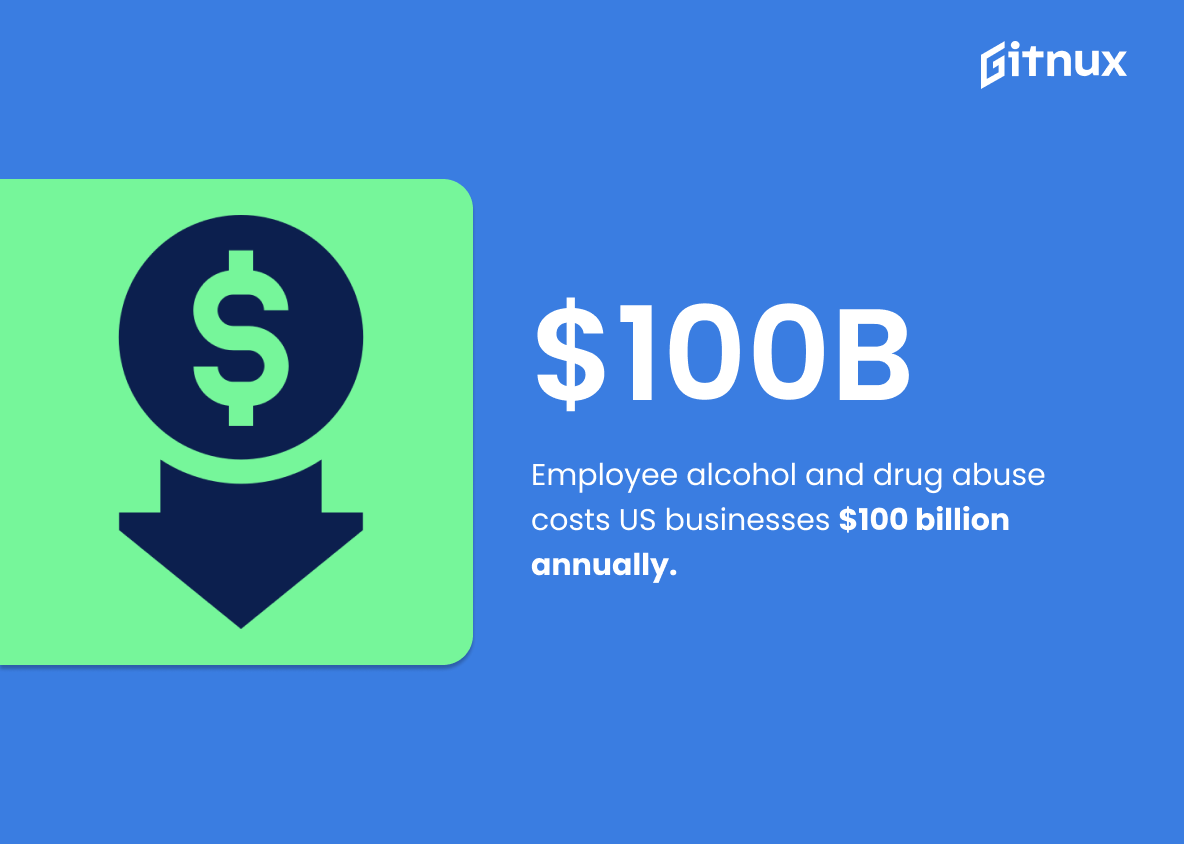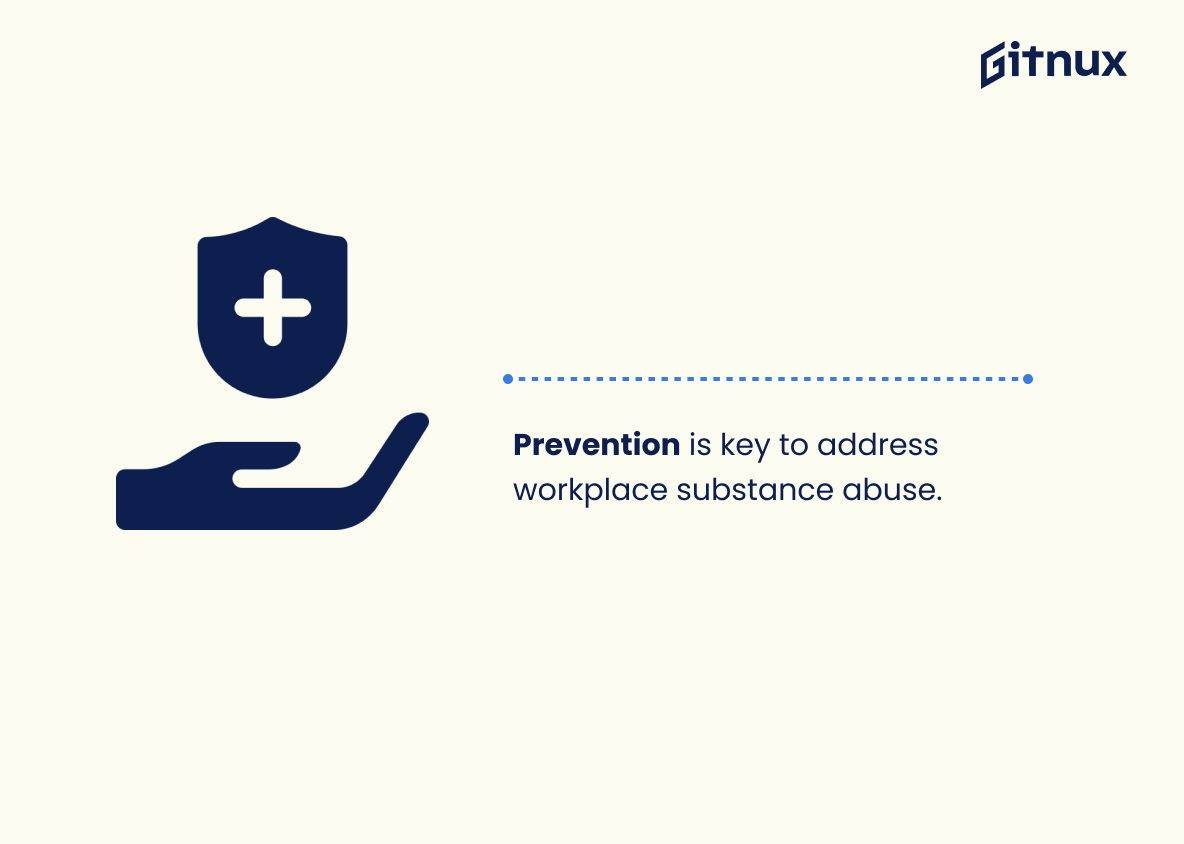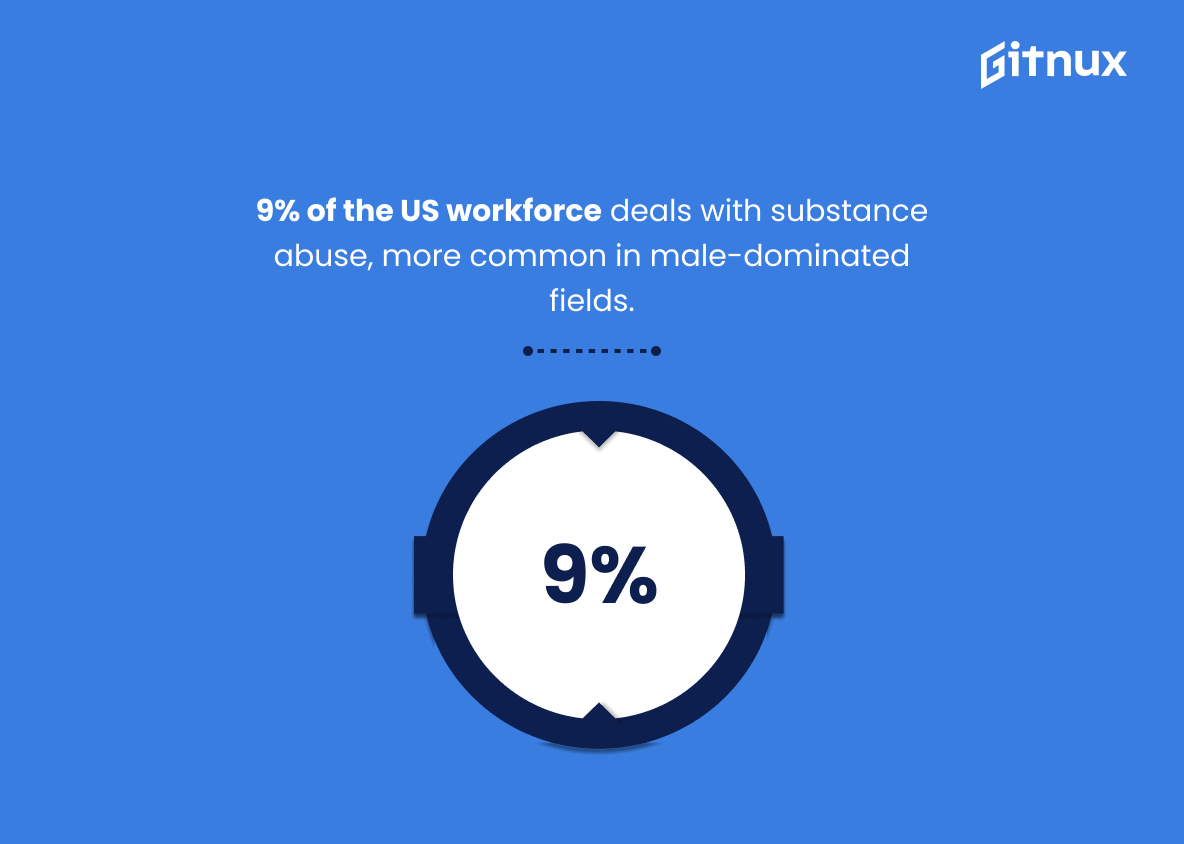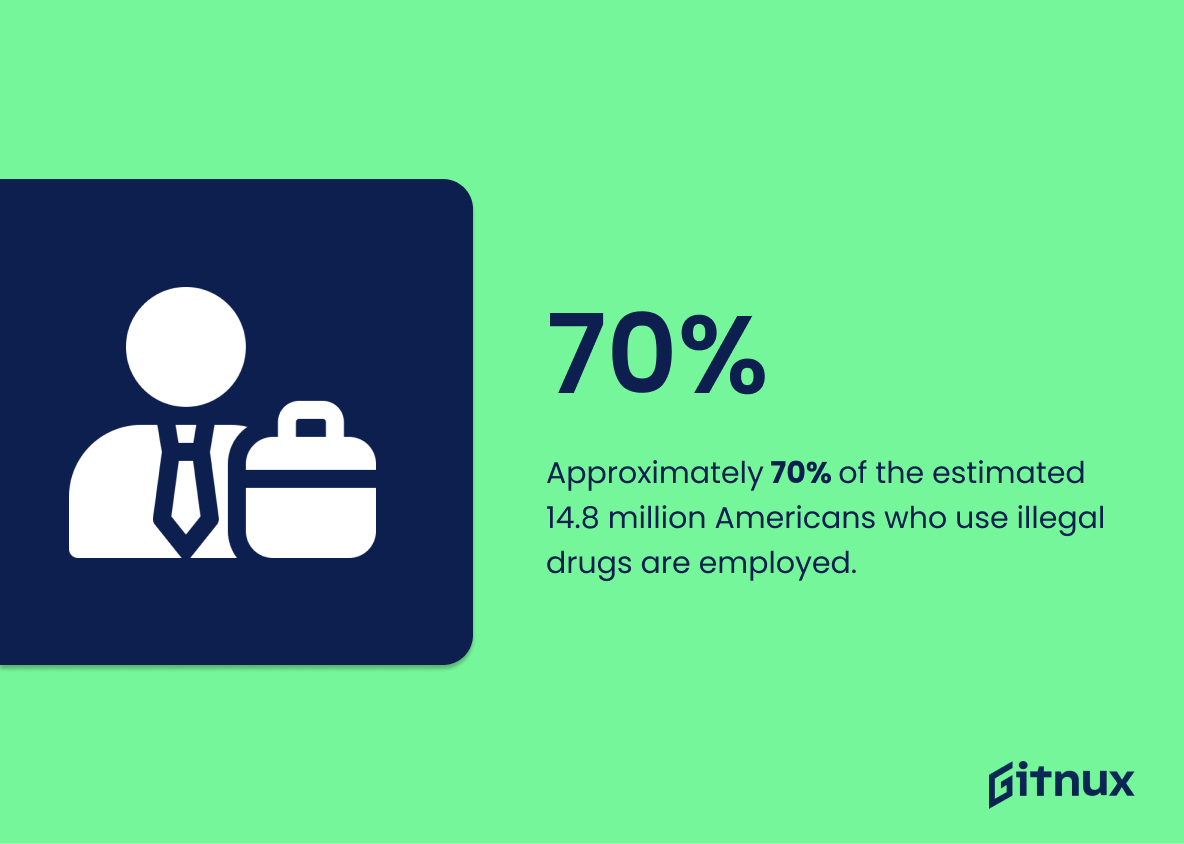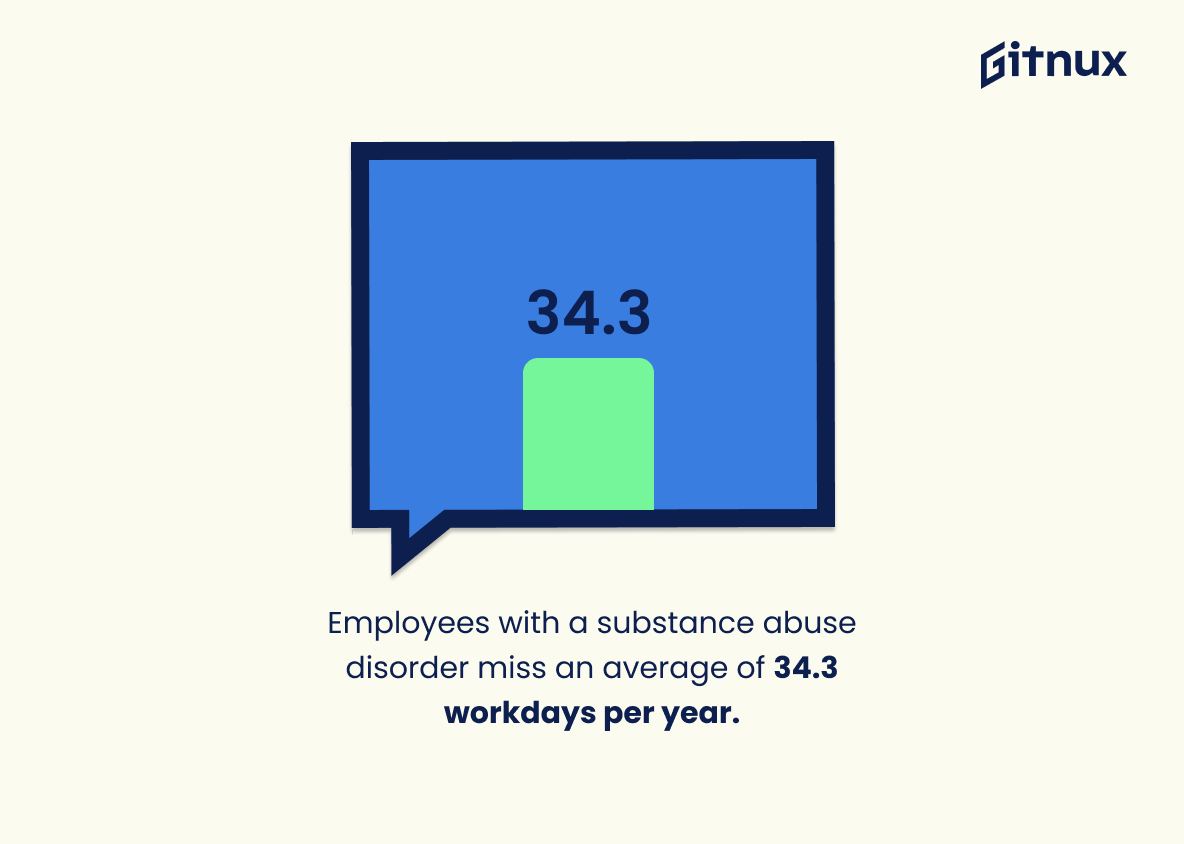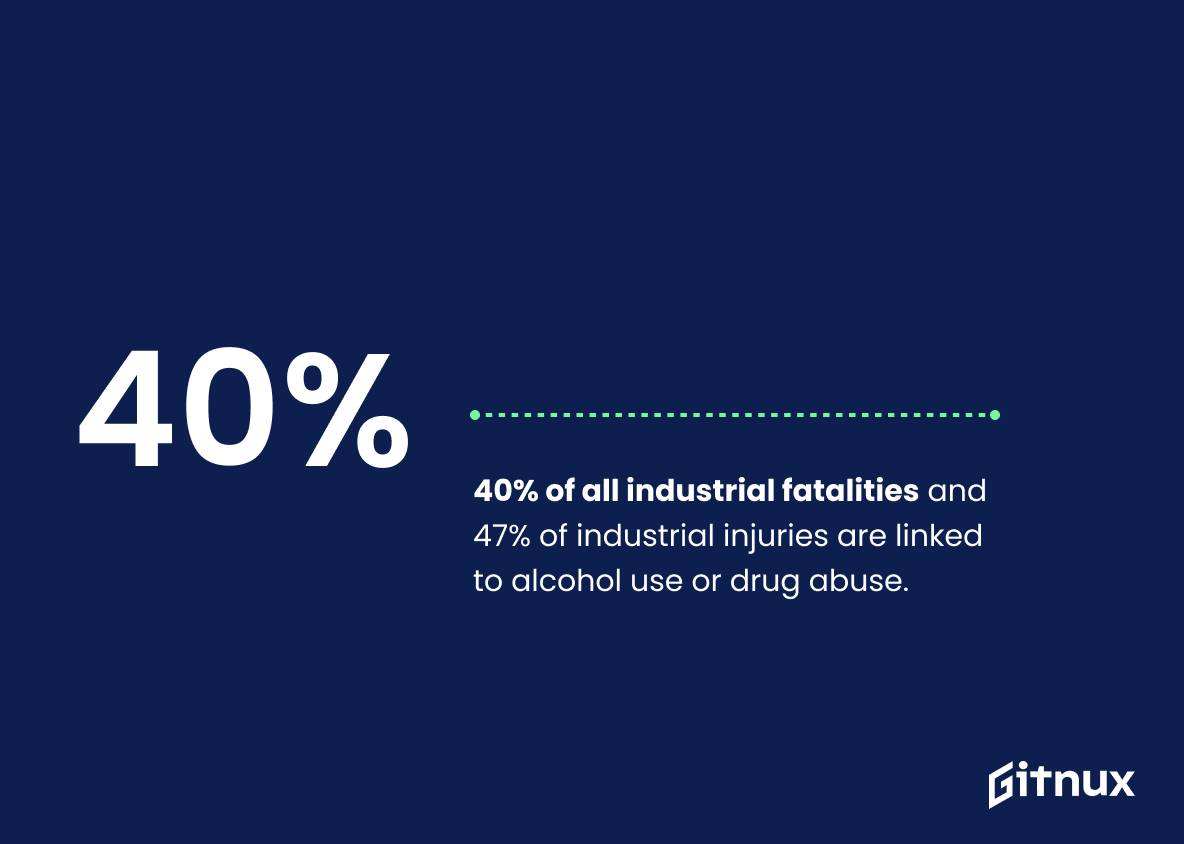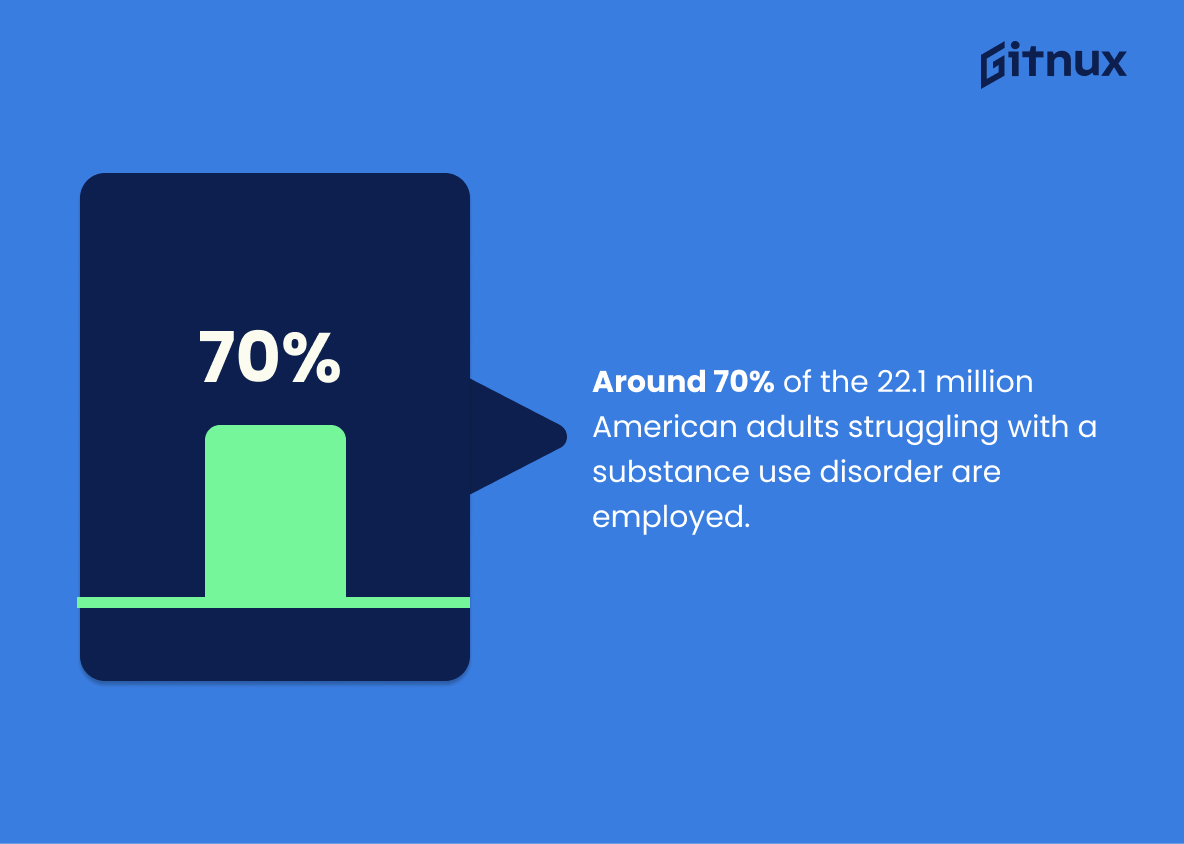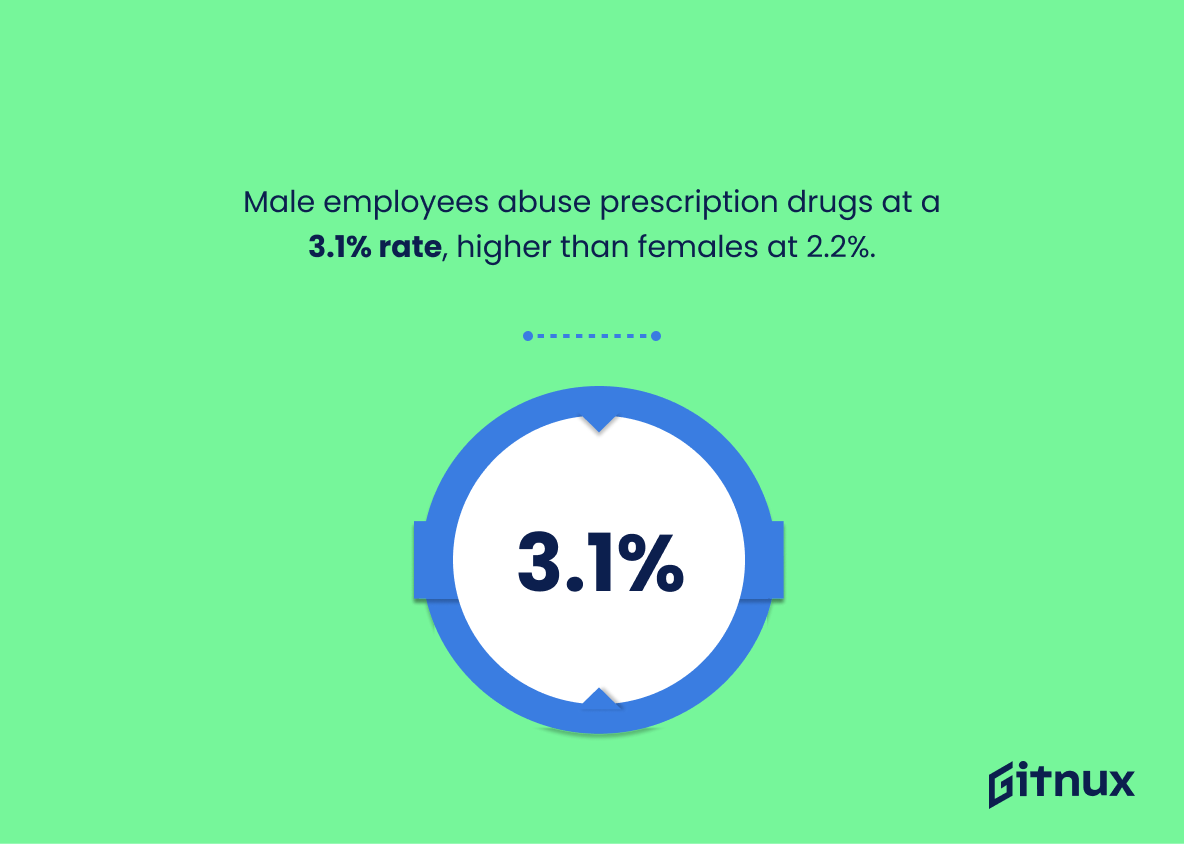Substance abuse in the workplace is a growing problem in the United States. It is estimated that more than 10 million Americans are currently abusing drugs or alcohol while on the job.
This can lead to decreased productivity, increased absenteeism, and a decrease in overall job satisfaction. In this blog post, we will take a look at the statistics surrounding substance abuse in the workplace and discuss the potential solutions to this growing problem.
Substance Abuse in the Workplace: Most Important Statistics
Drug and alcohol abuse in the workplace accounts for 65% of on-the-job accidents and 38% to 50% of workers’ compensation claims.
9% of the US workforce struggles with substance abuse, with higher rates in male-dominated professions.
Substance Abuse in the Workplace: Statistics Overview
In predominantly female occupations, both male and female employees have a lower percentage of substance abuse compared to employees of both genders in male-dominated occupations.
It demonstrates that the gender mix of employees can play a key role in the culture of the workplace and how substance abuse is accepted or discouraged. This can help employers better understand how to create a workplace environment that discourages substance abuse.
22.5% of people admit to using drugs or alcohol during work hours, with 25% being men and 20% being women, which highlights the prevalence of drug and alcohol use in the workplace, and the gender differences in the use of these substances.
This information can be used to inform workplace policies and strategies to address substance abuse in the workplace.
Drug and alcohol use is more prevalent in certain industries, such as service, construction, and maintenance, and can contribute to thousands of accidents, injuries, and deaths each year.
In the context of substance abuse in the workplace statistics this highlights the need for employers to be aware of the prevalence of drug and alcohol use in certain industries and to take steps to reduce the risks associated with it.
66% of people admit to using alcohol, 22% admit to using marijuana, 10% admit to using Oxycontin/Vicodin, and 8% admit to using Codeine/Adderall/Ritalin during work hours.
These numbers show us the prevalence of substance abuse in the workplace and the need for employers to be aware of the issue and take necessary steps to address it.
Alcohol and drug abuse can cause a variety of problems on the job, such as sleeping on the job, poor decision making, loss of efficiency, and illegal activities.
These risks can also include not only physical harm and financial losses, but also decreased productivity and legal issues. Understanding them can help employers create policies and procedures to prevent and address substance abuse in the workplace.
Alcohol and drug abuse by employees costs businesses in the United States $100 billion a year, with heavy drinkers and drug users missing work due to hangovers, going to work high or drunk, and skipping work in the past month.
They demonstrate the costly financial burden of substance abuse on businesses, as well as the potential safety risks associated with employees coming to work under the influence of drugs or alcohol.
Comprehensive programs against substance abuse can lead to a significant decrease in absenteeism, problems with supervisors, mistakes in work, and on-the-job injuries.
They can be effective in reducing the negative impacts of substance abuse in the workplace. This is beneficial for both employers and employees, as it can lead to improved productivity, fewer mistakes, and fewer workplace injuries.
Prevention is the best strategy to tackle substance abuse in the workplace, which can be achieved through developing a Substance Abuse Policy, offering education, creating an Employee Assistance Program, and hiring people who are committed to success.
It shows that employers are taking proactive steps to prevent substance abuse in the workplace, which can lead to improved employee health, safety, and productivity.
Drug and alcohol abuse in the workplace accounts for 65% of on-the-job accidents and 38% to 50% of workers’ compensation claims.
This highlights the need for employers to take proactive steps to address the issue in order to protect their employees and their business.
9% of the US workforce struggles with substance abuse, with higher rates in male-dominated professions.
It is also important to note that 79.3% of those struggling with substance abuse are employed either full or part-time, which highlights the need for employers to create policies and programs to support those struggling with substance abuse in the workplace.
Approximately 70% of the estimated 14.8 million Americans who use illegal drugs are employed.
Substance abuse is a pervasive issue that affects people from all walks of life, including those who are employed. This statistic is a call to action for employers to take a proactive approach to addressing substance abuse in the workplace.
Employees with a substance abuse disorder miss an average of 34.3 workdays per year.
With an average of 34.3 workdays missed per year, it is clear that substance abuse can have a significant impact on an employee’s ability to perform their job duties. This statistic highlights the importance of addressing substance abuse in the workplace in order to ensure that employees are able to remain productive and successful.
Approximately 40% of all industrial fatalities and 47% of industrial injuries are linked to alcohol use or drug abuse.
Alcohol and drug use can have serious, even fatal, consequences for those employed in industrial settings. It is a sobering reminder of the need for employers to take steps to ensure that their employees are not engaging in activities that could put them in harm’s way.
Around 70% of the 22.1 million American adults struggling with a substance use disorder are employed.
A large portion of the population struggling with substance use disorder are still employed, meaning that employers must be aware of the potential for substance abuse in their workplace and take steps to address it.
Male employees reportedly abuse prescription drugs more than female employees, with a 3.1% rate compared to 2.2%.
This highlights the need for employers to be aware of the potential for drug abuse among their male employees and to take steps to address it. Furthermore, it serves as a reminder that substance abuse is not limited to any one gender, and that employers should be vigilant in monitoring and addressing drug abuse among all employees.
Substance abuse causes around 35% of all absenteeism in the workplace.
Substance abuse is a major contributor to employee absenteeism, which can have a significant impact on a company’s bottom line. This statistic is an important reminder that substance abuse is a serious issue that needs to be addressed in order to ensure a safe and productive workplace.
Workers in the information industry reportedly had the lowest rate of substance abuse, with 41.9% reporting no use.
The information industry is leading the way in terms of reducing substance abuse in the workplace. It is a testament to the fact that with the right strategies and initiatives, it is possible to make a positive impact on the prevalence of substance abuse in the workplace.
65% of workplace accidents can be attributed to substance abuse.
A significant portion of workplace accidents can be attributed to substance abuse, and serves as a warning to employers and employees alike to be aware of the risks associated with substance abuse in the workplace.
Approximately 30% of workplace drug tests return positive results.
This highlights the need for employers to be vigilant in their efforts to combat drug use in the workplace, as well as the need for employees to be aware of the risks associated with drug use.
Workplaces with drug-testing policies have seen a 51% decline in workplace injuries.
When employers take the initiative to implement drug-testing policies, they are able to drastically reduce the number of workplace injuries. This is an important statistic to consider when discussing the impact of substance abuse in the workplace, as it demonstrates the potential for employers to reduce the risk of injury by taking proactive steps to address the issue.
About 42% of workers subject to drug testing say it positively influences the working environment.
When implemented, drug testing can create a more positive and productive working environment. This is an important point to consider when discussing the prevalence of substance abuse in the workplace, as it highlights the potential for employers to take proactive steps to reduce the risk of drug use in the workplace.
Conclusion
Substance abuse in the workplace is a serious issue that needs to be addressed. The statistics show that substance abuse is on the rise, and employers need to be aware of the risks and take steps to prevent it.
Employers should create a drug-free workplace policy, provide education and training to employees, and ensure that they are following all applicable laws. By taking these steps, employers can help to reduce the prevalence of substance abuse in the workplace and create a safe and productive work environment.
References
1 – The Dangers of Substance Abuse in the Workplace (verywellmind.com)
2 – The Prevalence of Substance Abuse in the Workplace (drugabuse.com)
3 – Substance abuse in the workplace: The risks and how to help | recovered.org
4 – The Prevalence of Substance Abuse in the Workplace (drugabuse.com)
5 – The Dangers of Substance Abuse in the Workplace (verywellmind.com)
6 – The Dangers of Substance Abuse in the Workplace (verywellmind.com)
7 – The Dangers of Substance Abuse in the Workplace (verywellmind.com)
8 – Substance Abuse in the Workplace – The Risks and How to Help (krtstraining.com.au)
9 – Substance abuse in the workplace: The risks and how to help | recovered.org
10 – Substance abuse in the workplace: The risks and how to help | recovered.org
WifiTalents, cited April 2024: Substance Abuse In The Workplace
